A disabled player exception can be granted when an NBA team has a player go down with an injury deemed to be season-ending. The exception gives the club some additional spending flexibility, functioning almost as a cross between a traded player exception and a mid-level exception.
We go into more detail on who qualifies for disabled player exceptions and how exactly they work in our glossary entry on the subject. But essentially, a DPE gives a team the opportunity to add an injury replacement by either signing a player to a one-year contract, trading for a player in the final year of his contract, or placing a waiver claim on a player in the final year of his contract.
Because the rules related to disable player exceptions are somewhat restrictive and the exceptions themselves generally aren’t worth a lot, they often simply expire without being used. Still, it’s worth keeping an eye on which disabled player exceptions have been granted, just in case.
We’ll use this space to break down the teams with disabled player exceptions available for the 2023/24 league year, updating it as the season progresses if more teams are granted DPEs and/or to indicate which ones have been used.
Teams have until January 15 to apply for a disabled player exception and until March 11 to actually use them (the typical deadline is March 10, but it gets pushed to the next business day when March 10 falls on a weekend).
Here’s the list so far:
Available disabled player exceptions:
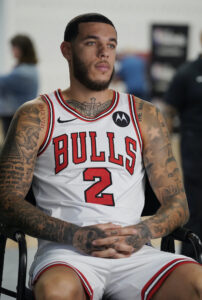 After missing half of the 2021/22 season and all of ’22/23, Ball still wasn’t ready to play this fall. The point guard, who has undergone multiple procedures in an attempt to address his knee problems, received a cartilage transplant surgery in March, and head of basketball operations Arturas Karnisovas told reporters in June that he didn’t expect Ball to be available for the 2023/24 campaign.
After missing half of the 2021/22 season and all of ’22/23, Ball still wasn’t ready to play this fall. The point guard, who has undergone multiple procedures in an attempt to address his knee problems, received a cartilage transplant surgery in March, and head of basketball operations Arturas Karnisovas told reporters in June that he didn’t expect Ball to be available for the 2023/24 campaign.
Because Ball’s salary this season is $20,465,117, Chicago received a disabled player exception worth half of that amount: approximately $10.23MM. That’s a sizable exception, the largest one the Bulls hold after having used about half of their mid-level exception to sign Jevon Carter.
However, Chicago’s team salary isn’t far below the luxury tax line — the team actually needed to waive its 15th man before the season began in order to sneak below the tax threshold.
Ownership hasn’t shown any inclination to become a taxpayer in recent years, especially for a roster that isn’t a championship contender. There’s no reason to expect that to change this season, so if the Bulls use their DPE, it’ll probably be in a trade where they’re also sending out some salary and staying out of tax territory.
One of the players Portland acquired from Boston in the Jrue Holiday trade, Williams saw his poor injury luck continue in 2023/24, as he was forced to undergo season-ending knee surgery less than a month into his first season as a Trail Blazer.
Williams’ deal includes some incentives, but his base salary is $11,571,429, so the Blazers’ disabled player exception is worth half of that amount.
Portland is armed with several cap exceptions, including the full mid-level exception and four trade exceptions (two of which are worth $8.3MM or more). The Blazers’ team salary is also just $3.5MM below the luxury tax line, so it seems unlikely that they’ll actually need to use their DPE. Still, it’s another tool they’ll have available as they consider in-season trades to aid their rebuild.
Bassey’s season came to an early end in December when he tore his left ACL. He had been playing a limited role in San Antonio and actually sustained the injury while he was in the G League with the Austin Spurs.
Bassey’s salary this season was just $2.6MM, so the Spurs’ disabled player exception is modest and likely won’t be much use on the trade market — the only potential trade targets whose salaries would fit into that exception are rookies, and rookies generally aren’t on expiring (one-year) deals.
Used disabled player exceptions:
Morant’s season came to an early end when he underwent surgery to address a labral tear in his right shoulder. The injury occurred a little before the January 15 deadline to apply for a disabled player exception, allowing the Grizzlies to apply for a second DPE after having already been granted one earlier in the season.
The Morant DPE was worth $12.4MM (the amount of the non-taxpayer mid-level exception), since that amount is lesser than half of his $34MM salary.
The Grizzlies used that exception in a trade with the Rockets in order to take on Victor Oladipo‘s $9.45MM expiring contract. Memphis sent out Steven Adams in the deal, generating a new $12.6MM trade exception for his outgoing salary.
Unavailable disabled player exceptions:
A knee injury sidelined Adams for the final few months of the 2022/23 season, but the expectation was that he’d be ready to return this fall following a lengthy non-surgical rehab process.
Unfortunately, that non-surgical plan failed to address the instability issues in Adams’ knee, according to the Grizzlies, who announced that the veteran center would undergo a procedure on his right posterior cruciate ligament that would keep him on the shelf for all of ’23/24.
The Grizzlies were granted a disabled player exception worth half of Adams’ $12.6MM salary, but they forfeited that DPE when they sent the big man to Houston in the pre-deadline trade detailed above. Teams aren’t permitted to use a disabled player exception if the injured player is no longer on the roster.
Pending disabled player exception requests:
Denied disabled player exception requests:
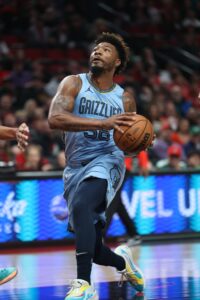 Shams Charania of The Athletic (Twitter link) first reported that Smart is expected to miss multiple weeks as a result of the injury, which occurred during Tuesday’s loss to the Lakers. Smart left the game in the first quarter after landing on Austin Reaves‘ foot while contesting a shot (Twitter video link via Bally Sports).
Shams Charania of The Athletic (Twitter link) first reported that Smart is expected to miss multiple weeks as a result of the injury, which occurred during Tuesday’s loss to the Lakers. Smart left the game in the first quarter after landing on Austin Reaves‘ foot while contesting a shot (Twitter video link via Bally Sports).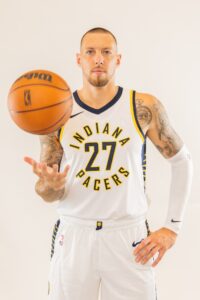 According to Andrew Greif of The Los Angeles Times (
According to Andrew Greif of The Los Angeles Times ( After missing half of the 2021/22 season and all of ’22/23, Ball still wasn’t ready to play this fall. The point guard, who has undergone multiple procedures in an attempt to address his knee problems, received a
After missing half of the 2021/22 season and all of ’22/23, Ball still wasn’t ready to play this fall. The point guard, who has undergone multiple procedures in an attempt to address his knee problems, received a 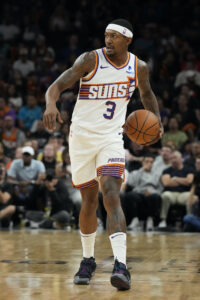 After being acquired this summer by the Suns in a blockbuster trade, Beal was forced to miss his first seven games with the club due to low back issues that were previously diagnosed as spasms. He debuted last Wednesday and appeared in three games, but
After being acquired this summer by the Suns in a blockbuster trade, Beal was forced to miss his first seven games with the club due to low back issues that were previously diagnosed as spasms. He debuted last Wednesday and appeared in three games, but 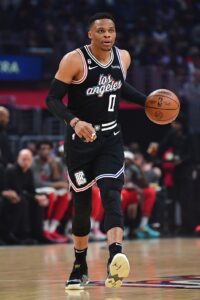 According to Haynes, the plan is for Westbrook to come off the bench for the Clippers in Friday’s in-season tournament game vs. Houston, with
According to Haynes, the plan is for Westbrook to come off the bench for the Clippers in Friday’s in-season tournament game vs. Houston, with 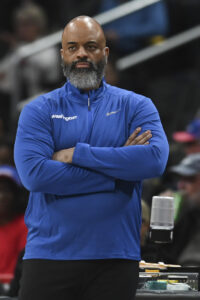 Given that Washington missed the playoffs in Unseld’s first two years with the team and then overhauled the front office this past offseason, there was a sense that it may just be a matter of time before the new decision-makers, including team president Michael Winger and general manager Will Dawkins, bring in their own coach.
Given that Washington missed the playoffs in Unseld’s first two years with the team and then overhauled the front office this past offseason, there was a sense that it may just be a matter of time before the new decision-makers, including team president Michael Winger and general manager Will Dawkins, bring in their own coach.